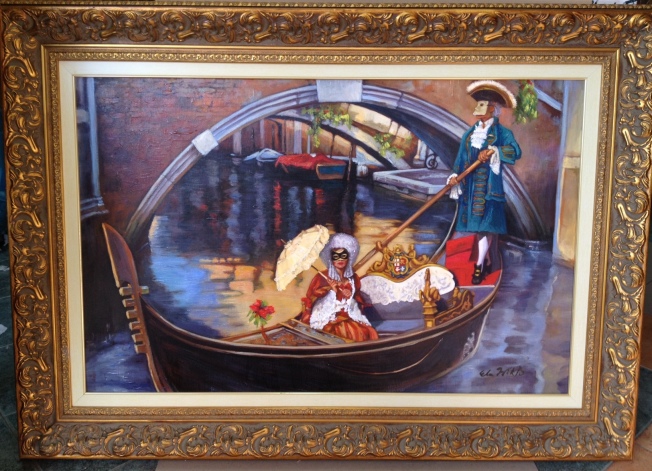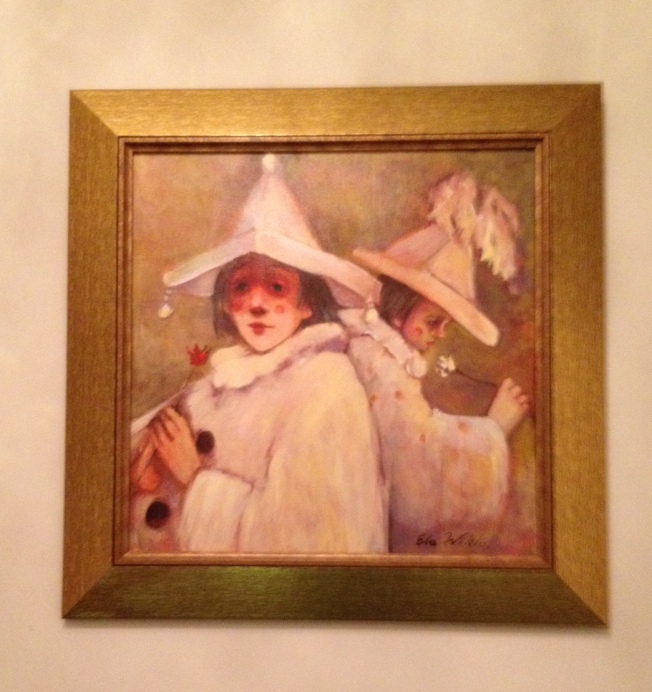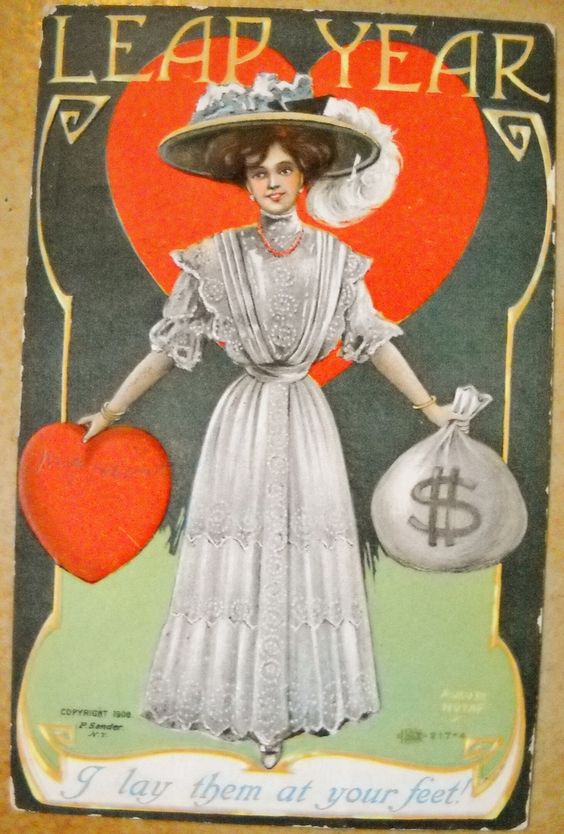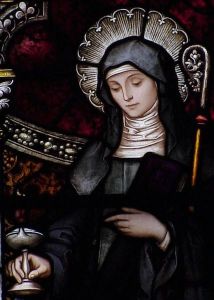From 31 January to 17 February, thousands of people have packed the narrow streets of Venice for its annual week-long carnival.
Carnival that the only one time then can ordinary cook is flirting with pretty Queen and the Countess. All thanks to the mask. Who founded it, to become someone else?

No, I’ve been never to a Venice carnival, but Today let me share something I’ve discovered about carnival when I painted.
Welcome to the masquerade!
Slowly, slowly it is an end of the winter holiday season or the phase of misrule. During that the time, the world stood on its head. Master waited on their servants, men dressed as the woman, adult acted like children. The carnival “the world stood on its head”. You could at will laugh, play and make things for which every day getting into a dungeon or on the stack. Who is putting on a mask, he ceased to be himself – his name, gender, and statuses were no longer relevant. People have always loved dressing up. (If you are Textile conservator you have to say thanks for that). Costumes were arranged frequently and densely: on the occasion of tournaments, important political events, festivals, but also … on a whim.

Marie Antoinette spent the whole day stylized to “shepherdess” entertaining in the idyllic village of like-in the gardens of Versailles. The ladies of the late eighteenth and early nineteenth century, fidgeting behind a Roman, risking the health of the tulle dresses, and a larger party in the days of Queen Victoria could not do without “live images” with costumed actors or courageous visitors. But no, even the most sophisticated fun costume did not provoke so many emotions, which masquerade, or a masquerade ball. As you already know fashion came from Venice. Masks gave anonymity; in turn, a sense of impunity that allowed ignored all conventions and social divisions.

Sometimes the addition in dance carnival was very risky and dance participants masquerade cause very real threat. A costume ball at the Stockholm Opera on March 16, 1792, claimed the lives of Gustav III, he was shot in the back by an assassin who recognized the king despite the mask and costume a la Van Dyck. Anckarström, the actual gunman, suffered death as a result: and, according to the King’s criminal policy, was only tortured after confessing voluntarily and being duly convicted.

Gustav III, 1772, by unknown painter (Swedish National Costume)
Even worse was Ball on the 29 January 1398, call the burning ball where the French king Charles VI masquerading himself with a group of friends, as “savages”. They were dressed “in costumes of linen cloth sewn onto their bodies and soaked in resinous wax or pitch to hold a covering of frazzled hemp so that they appeared shaggy & hairy from head to foot. Resin-soaked clothes took the torch – most of the “savages” was burned down, and the king survived miraculously, extinguished skirts resolute Duchesse de Berry. Nymphs and Cleopatra

Nonetheless, the king’s brother Louis of Valois, Duke of Orléans, who had arrived late, approached with a lighted torch in order to discover the identity of the masquerades, and he set one of them on fire. There was panic as the fire spread. The Duchess of Berry threw the train of her gown over the king. Several knights who tried to put out the flames were severely burned. Four of the wild men perished: Charles de Poiters, son of the Count of Valentinois; Huguet de Guisay; Yvain de Foix; and the Count of Joigny. Another – Jean, son of the Lord of Nantouillet – saved himself by jumping into a dishwater tub. A good costume was not easy. Designed by the artists of court costumes cost a fortune, and their preparation it took many weeks. As fashion masquerade penetrated into the lower realms, began to use cheaper materials, paper, blotting paper or coloured sequins. In the nineteenth century, there were even rental costumes. Masquerades are no longer reserved for the aristocracy in 1715 when the Paris Opera costume party held the first open to the public. Then, like balls held twice a week throughout the carnival. Following the example of Paris, he followed the rest of the capitals.

Carnival celebrations, Couple dressed as Harlequin and Columbine, with confetti and streamers, Frontpage of French newspaper Le Petit Journal Illustre, March 5, 1922, Private Collection, (Photo by Leemage/UIG via Getty Images)
Masquerade costume and lost with bales only in the mid-nineteenth century. Victorian Era valued above all his decency, so guaranteeing anonymity and leaning to the mask antics were not welcome. But since nature abhors a vacuum, their absence was compensated by his flourish and blooming stylizations. The nineteenth-century fashion magazines leave no doubt – you could dress up literally everything (from the alphabet, the water lily to the … electric light), provided that the outfit is not revealed too much and did not conceal the identity person on the ball performer. And so covering mask was considered indecent, but now disguise for Madame du Barry – the daughter of a cook and a monk Parisian courtesan and mistress of Louis XV then – no one is shocked. Interestingly stereotype was that Cleopatra was reserved for brunettes with dark eyes, however, the blondes were doomed to the characters ‘essential’: nymphs, butterflies and dawn. Ladies can dress up as a man and the occasion boast legs in tight stockings (though the styling rather “would go no” on the ball for the elite). Lords put petticoats did not seem right, but the brave can venture short baggy trousers plus stock dressed a la troubadour. Masquerading returned to favour after the First World War. Then also it was flexibility in terms of costumes. Decency gave way to obsession appetite for the adventure. The costume had a surprise, dazzle, shock. Just like enthusiasm waned and hardly anyone wants to invest in phenomenal costume. That is why coming up with a theme for contemporary carnival masquerade is a real test.
Wait I am not done. If someone decided to treat the issue of dressing up for this year’s carnival as seriously as our ancestors may have recourse to the following list of the most popular inspiration:

First of all is the classic Venetian masquerade carnival. Masks: immortal domino (covering only around the eyes, no nose), Bauta (hiding his face up to his chin, with a protruding upper “lip” that allows drinking and eating)
Bauta the most widely used Venetian mask Among the various masks made by the maschereri, though, one was worn in every season, by men, women, the rich and the poor, and it can indeed be considered as the most effective disguise: its name is Bauta or Bautta. A Bauta is no mere mask, but rather a whole costume, aimed not only at hiding one’s face, but his, or her, social status, as well. “Wear me”, it said, “and you can be whoever you want to be”. This Venetian love for this disguise dates back as far as the 13th century when the first document quoting its name was written. Although the etymology is not certain, the name “Bauta” may come from the same root as the German behüten, “to protect”, that is exactly what this costume does: protecting one’s identity, by means of a black hooded cape, trimmed with lace for nobles, and a black or white mask, the Volto, whose shape was unique.

The Bauta is well known even today, thanks to movies such as Casanova, directed by Lasse Hallström (2005), where it is worn only by the main characters, belonging to the upper class. One of the most peculiar features of the Bauta, though, is its widespread and varied use: it could indeed be put on by everyone, i.e. both by nobles and by common people. Thus members of the lower classes were also offered a chance for mixing up with the upper class, especially at their parties. This is proven by the fact that every Bautta had to be greeted since it was impossible to know who was wearing it. The Bauta is, therefore, an extremely adequate disguise: maybe this is the reason why it was shown more tolerance than other masks. Venetians were, indeed, allowed to wear it even on Saint Mark’s day (April, 25th), on the Ascension Day and during the elections of doges and procurators of the Serenissima Republic. Moretta (only for ladies, oval mask over the entire face, without opening mouth ). These were placed mostly long coat, hat or hood.

Moretta with intrigue secret, all of the secrets. Muta means “ mute” Imaging woman wearing this mask, were unspeaking since it could only be held to face by gripping one’s teeth on the button placed inside it. Only when she wanted to finally gave the answer, she put the mask down and revealed herself.

Felice Boscarati ; LA MORETTA c.1780s
The Moretta mask is black, hides a woman’s face, is small oval covering woman face only up to her eyes and down to the mouth. Together with a mask, the woman often wore a long taffeta cloth, the xendal, which was originally used by ladies to cover their head and shoulders. Interestingly, this garment, which later developed into a closed cloth wholly made of lace, was also used as a lace trim for Bauta cape.

Comedy dell’arte – to disguise that consisted of not only clothing but also gestures and behaviour. The most popular is the melancholy Pierrot white dress, white hat and bleached face; ruff or large flange, cynical harlequin with colourful dress sewn with diamonds, ruff and black mask and brash, bright and lovably flirting columbine.
Now, take a deep breath and relax. Become open to the changes.

This may take some time but is the New Year’s bountiful blessing:
365 bright mornings,
52 promising weeks,
12 months
full of beautiful possibilities.
Ela























